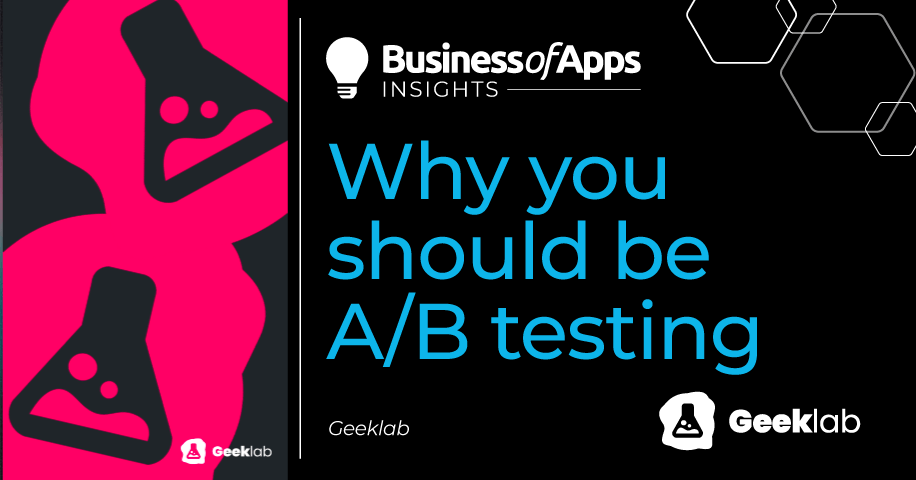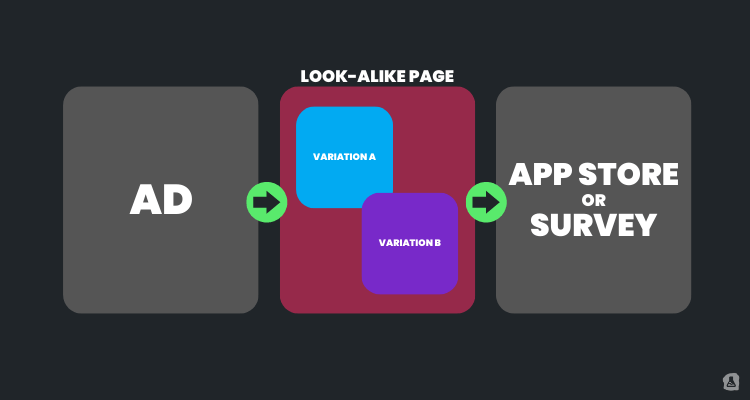In the ever-evolving landscape of mobile app development, the need for continuous improvement and optimization is crucial. Whether you are creating the next hit game or app or want to improve the performance of an existing one, one of the most effective strategies to achieve this is through A/B testing.
Starting your A/B testing journey early on in development helps you fail early and fail small instead of wasting resources. Testing isn’t just a one-time process; instead, it’s an iterative journey that begins with a fundamental question: “What is it that we want to find out?”. In this article, we delve into the importance of A/B testing and how it can be harnessed to elevate your app’s success.
Learn from insights
Starting from the early days of development, A/B testing helps you analyze your market potential. Your game might not be out yet, but your audience is out there. Why not get their feedback to develop the next hit game?
By diving into testing, you can gain valuable information about your demographic, collect feedback from actual users, analyze user engagement metrics, discern factors influencing marketability or conversion rate (CVR), and receive guidance on the developmental trajectory of your app. It is the key to making informed, data-driven decisions that can refine your app’s performance and identify the direction in which it should evolve.
App Store Optimization is equally important once the app is out. Utilizing A/B testing for this can help increase the conversion rate and stay relevant and on top of trends. Regularly testing the app store product page assets allows you to see the effects of different icons, screenshots, feature videos, and descriptions might have.
Testing options
Click-through test with ads
One method to use is a click-through test, characterized by its low-effort setup and the focus on gauging ad performance and user insights. A click-through test includes running ads on a preferred platform and connecting it to a survey. On the survey, you are able to collect qualitative data with questions relevant to the hypothesis.
Click-through test with ads
Source: Geeklab
Click-through testing is a useful starting point, as it requires low effort. It primarily focuses on ad performance and engagement, providing data points in interaction and ad engagement. The results can be analyzed to understand its appeal to the audience.
A/B test with look-alike pages
Another option is A/B testing with look-alike pages, which demands more effort but yields richer and more diverse data. An ad on any chosen platform takes the viewer to an app store look-alike product page. To create the look-alike page you typically use a third-party tool, such as Geeklab for example, that measures actions that users take on the look-alike page.
A/B test with look-alike pages
Source: Geeklab
The user can be directed either to the real app store product page or a survey for qualitative insights, depending on whether the app is published or not. This method enables inspection of the user behavior instead of ad performance.
CTV Growth Guide: A must-read for performance marketers
Whether you’re looking to boost brand awareness or drive user acquisition, this guide has you covered. Learn how to leverage CTV for both brand awareness and performance-driven campaigns and get actionable insights to optimize your strategies.
Download nowPros and cons
Click-through testing is a great starting point, however, it provides limited insights into user behavior. It primarily focuses on ad performance and engagement, offering a narrow perspective on the user’s initial interaction. A/B testing on the other hand provides valuable data on user behavior.
One of the significant limitations of click-through testing is its relatively short test funnel, which translates to a limited amount of data. In contrast, A/B testing offers a more extended test duration, allowing for the accumulation of a substantial dataset. This data-centric approach lends a higher degree of statistical confidence to the results.
While click-through testing might seem efficient due to its simplicity, it lacks the granularity that A/B testing brings to the table. The ability to dissect data helps understand the nuanced impact of each element on user behavior, enabling targeted optimizations for maximum impact.
It’s important to note that click-through testing does have its place, especially when rapid insights are required for quick decisions. Additionally, resources that A/B testing requires, such as visual assets, time, or financial means might not always be available which is why it is good to have other options available.
Interpreting and leveraging the data
Understanding how to interpret the data collected from A/B tests is just as crucial as running the tests themselves. By asking “Why?” when analyzing user behavior, you can uncover insights that drive meaningful actions. For example, discovering that users extensively scroll through all screenshots on a look-alike page can signal the importance of investing in perfecting those visuals. Tailoring your efforts based on such insights can lead to increased conversions and a more engaged user base.
Why you should be A/B testing
- Brings confidence to decision-making
- Fail early, fail small – win early, win big
- Helps stay relevant and on top of trends
- Allows you to learn from your audience early on
- Audience insights help steer the trajectory of development
- Potential increase in app downloads by finding best-performing app store assets
Tips for successful A/B testing
- Test early: Initiate A/B tests at the earliest production stage to identify the most promising app development direction and continue to find the best-performing app store assets.
- Set clear goals: Define specific goals for each test to extract the most relevant and actionable data. Conducting comprehensive research and building a strong hypothesis is crucial to setting the base.
- One thing at a time: Focus on testing one element at a time. Test individual elements such as theme, art style, features, and gameplay. screenshots, icons, or game names. This ensures clear attribution of changes to specific outcomes.
- Multiple variants: Testing more than one variant provides the opportunity for in-depth analysis and comparison of different data points.
Conclusion
Establishing a routine of testing throughout development and beyond launch sets a foundation for data-fueled decision-making. The audience is out there already and harnessing that to your advantage helps avoid wasting resources and time.
Finding a method for testing that serves your purpose is important. A click-through test that gives important ad-level data is a great starting point as it requires low effort. A more robust data set can be achieved with the help of A/B testing with look-alike pages. Although it is more resource-heavy, it allows you to analyse user behavior.
Combining qualitative and quantitative data provides more in-depth insights into what you should be doing and why.














